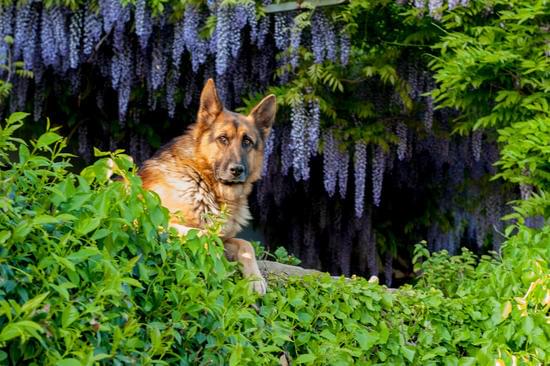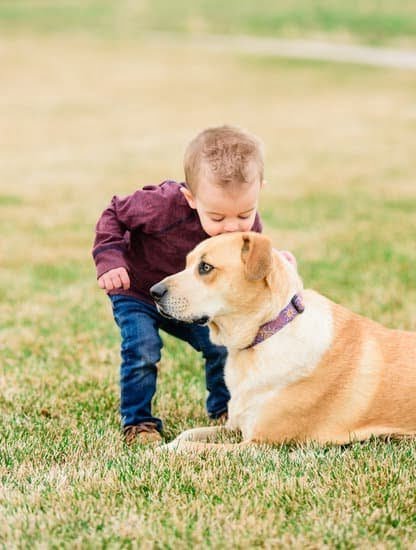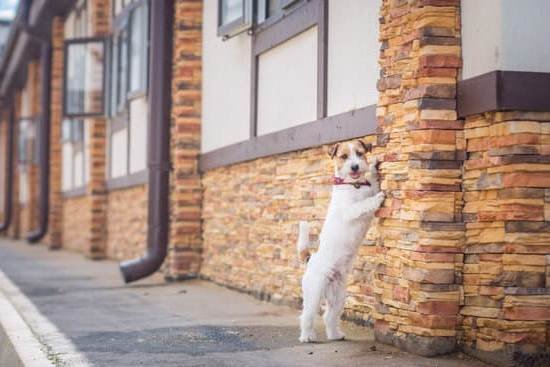Outdoor time is essential for the overall well-being and happiness of our furry friends who spend most of their time indoors. But what about those indoor dogs who have never experienced the great outdoors? Training them to stay outside can be a rewarding and beneficial endeavor for both you and your pet. In this article, we will explore various strategies to help you train your indoor dog to stay outside and enjoy the many wonders of nature.
As responsible pet owners, it’s important for us to understand that indoor dogs have specific needs that may differ from their outdoor counterparts. By providing them with opportunities for outdoor exploration and exercise, we are fulfilling their instinctual desire for fresh air, mental stimulation, and physical activity. The outdoors offer a wide range of sensory experiences that can enrich an indoor dog’s life, enhance their socialization skills, and promote a healthy lifestyle.
Before embarking on the journey of training your indoor dog to stay outside, it is crucial to assess their readiness for outdoor training. Each dog has a unique temperament and behavior that should be taken into consideration. Some dogs may be more adventurous and welcoming towards the idea of exploring new environments, while others might require a more gradual approach. Understanding your dog’s personality traits will help tailor your training methods accordingly.
By following these tips and guidance outlined in this article, you can lay down a strong foundation by building basic obedience skills at home before venturing outdoors. Remember that patience, consistency, positive reinforcement, and gradual exposure are key elements in successfully transitioning an indoor dog into a confident companion who enjoys spending time outside. Let’s dive deeper into each step together as we embark on this journey towards transforming your indoor dog into an outdoor enthusiast.
Assessing your dog’s readiness for outdoor training
Before you begin training an indoor dog to stay outside, it’s important to assess their readiness for outdoor training by evaluating their behavior and temperament. This step is crucial as it will determine the approach you take during the training process. Here are some key factors to consider when assessing your dog’s readiness:
- Temperament: Take note of your dog’s overall temperament. Is your dog generally calm and relaxed, or easily excitable? A calm temperament may indicate that your dog is more likely to handle the transition to staying outside well, while an excitable or anxious temperament may require more patience and gradual exposure.
- Socialization Skills: Consider how well-socialized your dog is with other animals and people. If they are friendly and comfortable in new environments with different stimuli, they may adapt to outdoor training more easily. On the other hand, if they exhibit fear or aggression towards strangers or other dogs, it’s important to address these issues before exposing them to the outdoors.
- Obedience Level: Assess your dog’s current obedience level. Are they responsive to basic commands such as sit, stay, and come? If not, it may be beneficial to work on obedience training at home before venturing outside.
- Physical Health: Ensure that your dog is in good physical health before starting outdoor training. Take them for a veterinary check-up to rule out any underlying conditions that may impact their ability to spend time outside safely.
Once you have evaluated these aspects of your dog’s behavior and temperament, you will have a better understanding of their readiness for outdoor training. Keep in mind that each individual dog is unique, so tailor the process based on their specific needs and abilities.
To help you assess your dog’s readiness effectively, consider creating a checklist with criteria related to each factor mentioned above. This can serve as a reference point throughout the training journey and help you track their progress. Remember, patience and consistency are crucial during this assessment phase as it sets the foundation for a successful transition to outdoor training.
Building a strong foundation
Before you begin the process of training your indoor dog to stay outside, it is essential to establish a strong foundation of basic obedience training at home. This foundation will provide the necessary structure and discipline that your dog needs to succeed in an outdoor environment.
Start by teaching your dog basic commands such as sit, stay, come, and leave it. These commands are not only important for their safety but also help establish clear communication between you and your dog. Use positive reinforcement techniques such as treats and praise to reward their correct responses.
Consistency is key during this stage of training. Set aside designated times each day to work on obedience training with your dog. Keep the sessions short and enjoyable, gradually increasing the duration as your dog becomes more comfortable and responsive.
In addition to basic commands, it is crucial to work on leash training with your dog indoors. Teaching them to walk calmly on a leash will make outdoor walks much more pleasant for both of you. Start by introducing the leash indoors and rewarding your dog for walking beside you without pulling. Once they have mastered walking indoors, gradually transition to practicing in low-distraction outdoor environments before venturing out into busier areas.
By building a strong foundation of basic obedience training at home, you are setting your indoor dog up for success when it comes time to venture outside. The skills they learn during this stage will create a solid framework for further outdoor training and ensure a safe and enjoyable experience for both you and your furry companion.
| Training Tips | Description |
|---|---|
| Consistency | Set designated times each day for obedience training sessions. |
| Positive Reinforcement | Use treats and praise to reward correct responses during training. |
| Short Sessions | Keep training sessions short and enjoyable, gradually increasing duration. |
| Leash Training | Introduce leash indoors, then transition to practicing outdoors in low-distraction environments. |
Introducing your dog to outdoor environments
When transitioning your indoor dog to staying outside, it is essential to introduce them to the new outdoor environment gradually. This gradual exposure will help them become comfortable with the unfamiliar sights, sounds, and smells they may encounter outdoors. Here are some steps you can take to introduce your dog to outdoor environments in a positive and controlled manner:
- Start in a controlled area: Begin by taking your dog outside in an enclosed and safe area, such as a fenced yard or a quiet park. This will minimize any potential distractions or overwhelming stimuli that could cause anxiety or fear.
- Gradually increase the intensity of stimuli: Once your dog starts feeling more comfortable in the controlled environment, slowly introduce them to different natural elements they may encounter outside. For example, expose them to different surfaces like grass, pavement, or sand. Introduce new sights such as trees, birds, or squirrels.
- Use positive reinforcement: As you expose your dog to new stimuli outdoors, be sure to reward them for calm behavior and positive reactions. Carry treats with you and whenever your dog remains calm or shows interest in something without getting overly excited or anxious.
- Monitor body language: Pay close attention to your dog’s body language during these exposure sessions. Look out for signs of stress or fear, such as panting excessively, tail tucked between their legs, or cowering. If you notice any signs of distress, give your dog a break by returning to a familiar indoor environment and continue working on building their confidence before progressing further.
- Gradually extend exposure time: Once your dog becomes more comfortable with the initial outdoor exposure sessions, gradually increase the duration of each session over time. This will help them build tolerance and adjust to spending longer periods outside without becoming overwhelmed.
By following these steps for introducing your dog to outdoor environments gradually, you will help them feel more at ease and confident in the great outdoors. Remember to always prioritize your dog’s comfort and well-being throughout the training process.
Encouraging positive associations
Creating positive associations with the outdoors is essential when training an indoor dog to stay outside. It helps them see being outdoors as a fun and rewarding experience, which increases their motivation to spend time in that environment. Using treats and rewards is an effective way to accomplish this.
When introducing your dog to the outdoors, bring along their favorite treats or use high-value rewards such as small pieces of cooked chicken or cheese. Whenever your dog shows signs of enjoying the outdoor environment, such as sniffing around or exploring, immediately reward them with a treat and offer words of praise. This positive reinforcement will strengthen their association between being outside and receiving a reward.
Additionally, you can create a “treasure hunt” game in your backyard by hiding treats in different areas. Encourage your dog to search for the treats while outdoors, making it a fun and engaging experience for them. This not only promotes exploration and mental stimulation but also reinforces their positive perception of the outdoor environment.
It’s important to note that treats should be used strategically and in moderation. You want your dog to focus on enjoying the outdoor experience rather than solely relying on treats for motivation. Gradually reduce the frequency of treat rewards as your dog becomes more comfortable and familiar with staying outside. This will help them develop a genuine love for being outdoors rather than solely associating it with food rewards.
Establishing boundaries and commands
One crucial aspect of training an indoor dog to stay outside is establishing boundaries and commands. By teaching your dog to stay within designated areas and respond to cues, you can ensure their safety and prevent any mishaps while they are outside. This section will provide some effective strategies to help you achieve this.
Introducing leash training
Before allowing your dog off-leash in outdoor areas, it is important to establish a strong foundation with leash training. Start by teaching your dog to walk politely on a leash and follow basic commands such as “sit,” “stay,” and “come.” This will help them understand that you are the one in control and that they must listen to your commands even when distractions are present.
Creating boundaries
Define specific boundaries within your outdoor space where you want your dog to stay. You can use physical markers such as flags or cones initially to make these boundaries clear. Pair these markers with verbal cues such as “stay” or “boundary” so that your dog begins associating these words with staying within the limits. Gradually remove the physical markers while reinforcing the verbal cues until your dog understands where they should remain.
Positive reinforcement
Positive reinforcement plays a vital role in establishing boundaries and commands for your dog. Whenever your dog successfully stays within the designated area or responds correctly to a command, reward them immediately with treats, praise, or playtime. This positive association will not only motivate them to repeat the desired behavior but also solidify their understanding of what is expected of them.
Consistency
Consistency is key when teaching your dog to stay within boundaries and respond to cues. Use the same verbal cues consistently so that your dog becomes familiar with them over time. Additionally, maintain consistency in rewards and consequences – always rewarding desired behavior and redirecting or ignoring unwanted behavior. By being consistent, you will help your dog understand and internalize the expectations more effectively.
Remember, establishing boundaries and commands is an ongoing process that requires patience and persistence. Practice regularly in various outdoor environments to reinforce your dog’s understanding and ensure their compliance across different situations. With time and dedication, your dog will become skilled at staying within designated areas and responding to cues, allowing them to safely enjoy their time outdoors.
Gradual increase in outdoor time
One of the key aspects of training an indoor dog to stay outside is gradually increasing their exposure to the outdoor environment over time. This gradual approach helps build their tolerance and comfort level, ensuring a successful transition. By slowly extending the duration of outdoor sessions, you can help your dog adjust and become more confident in spending time outside.
To begin with, start by taking your dog outside for short periods of time. This could be just a few minutes at first, allowing them to get used to being in the outdoor environment. During these initial outings, focus on positive associations by rewarding your dog with treats and praise when they exhibit calm behavior or respond well to commands.
As your dog becomes more comfortable, gradually increase the length of each outdoor session. You can use a timer or set specific goals for adding extra minutes or even hours to their outdoor time each day or week. This gradual increase will help them acclimate to being outdoors for longer periods without feeling overwhelmed or anxious.
Additionally, it’s important to monitor your dog’s reactions and body language during these extended outdoor sessions. Look for signs of stress or discomfort such as excessive panting, pacing, or avoidance behaviors. If you notice any signs of distress, shorten the duration of the outing and provide reassurance for your dog.
Overcoming fears and anxiety
Transitioning an indoor dog to staying outside can be a challenging process, especially if your dog experiences fears or anxieties about the outdoors. It is important to recognize and address these concerns in order to create a positive outdoor experience for your furry friend. Here are some strategies that can help you overcome your dog’s fears and anxieties:
- Gradual exposure: Start by introducing your dog to the outdoor environment in small, controlled doses. Begin with short periods of time outside and gradually increase the duration as your dog becomes more comfortable. This gradual approach allows them to acclimate at their own pace and reduces the likelihood of overwhelming them.
- Positive reinforcement: Use treats, praise, and rewards to associate positive experiences with being outside. Whenever your dog displays calm or confident behavior outdoors, reward them with treats or affectionate praise. This will help create positive associations with the outdoor environment and reinforce their confidence.
- Counter-conditioning: If your dog has specific triggers that cause fear or anxiety outside, such as loud noises or unfamiliar sights, you can use counter-conditioning techniques to change their emotional response. For example, if your dog is afraid of car sounds, play recordings of car noises at a low volume while giving them treats or engaging them in a fun activity indoors.
Gradually increase the volume over time and continue rewarding them until they no longer exhibit fear towards the sound. - Desensitization: Desensitizing your dog to specific stimuli can also be helpful in reducing their anxiety outdoors. This involves gradually exposing them to the trigger in a controlled manner, starting from a distance where they feel comfortable and gradually decreasing the distance over time. By repeatedly exposing them without causing fear or discomfort, you can help them build resilience towards those triggers.
- Seek professional help if needed: If your dog’s fears or anxieties persist despite your best efforts, it may be beneficial to seek guidance from a professional dog trainer or behaviorist. They can assess your dog’s specific needs and provide you with effective strategies to address their fears and anxieties.
Remember that every dog is unique and may require different approaches when it comes to overcoming fears and anxieties. It is important to be patient, understanding, and supportive throughout the training process. By implementing these strategies, you can help your indoor dog overcome their fears and anxieties about being outside, ultimately allowing them to become a happier and more confident outdoor companion.
Monitoring your dog’s progress
Assessing your dog’s comfort level and progress is an essential part of training an indoor dog to stay outside. Every dog is different, and some may adapt more quickly than others, while others may require more time and patience. It’s important to closely monitor your dog’s behavior and comfort level throughout the training process to ensure their well-being and adjust the training accordingly.
Evaluating behavioral changes
As you continue to train your indoor dog to stay outside, pay attention to any behavioral changes that may indicate their comfort level. Look for signs of relaxation, such as loose body posture, wagging tail, and calm breathing. These are positive indications that your dog is becoming more comfortable in the outdoor environment.
On the other hand, be observant of any signs of anxiety or distress. This can include pacing, trembling, excessive panting, or attempts to escape the designated area. If you notice these behaviors, it may be a sign that your dog needs additional time and gradual exposure before progressing further in their outdoor training.
Adjusting training techniques
Based on your assessment of your dog’s progress and comfort level, you may need to adjust your training techniques. If your dog is showing signs of anxiety or fear, take a step back and slow down the training process. Go back to shorter sessions or reduce the exposure to stimuli that are causing discomfort.
For example, if your dog becomes anxious around loud noises in the outdoor environment, gradually introduce those sounds at a lower volume or distance until they become more comfortable. Use positive reinforcement techniques such as treats and praise when they respond well to these incremental challenges.
Seeking professional guidance
Transitioning an indoor dog to staying outside can sometimes be challenging, especially if there are underlying behavioral issues or fears. In such cases, it can be beneficial to seek professional guidance from a certified trainer or behaviorist who specializes in dog training. They can provide personalized advice and support to help you address any specific challenges your dog may be facing during the training process.
Remember, every dog is unique, and patience is key when training an indoor dog to stay outside. By closely monitoring their progress, making adjustments as needed, and seeking professional guidance if necessary, you can help your furry friend successfully make the transition to becoming a happy and confident outdoor companion.
Troubleshooting
Transitioning an indoor dog to staying outside can present some challenges along the way. It is important to be prepared for these challenges and have strategies in place to address them effectively. In this section, we will explore some common challenges that may arise during the process and provide potential solutions.
Challenge 1: Separation anxiety
One of the most common challenges when training an indoor dog to stay outside is separation anxiety. Dogs who are used to being in constant proximity with their humans may feel a sense of panic or distress when left alone outside. This can lead to excessive barking, destructive behavior, or attempts to escape.
Solution:
To address separation anxiety, start by gradually increasing the amount of time your dog spends outside alone. Begin with short increments and gradually extend the duration as your dog becomes more comfortable. Provide them with engaging toys or interactive feeders to keep them mentally stimulated while they are alone. Additionally, consider creating a safe and comfortable outdoor space for your dog with shelter, water, and familiar scents from inside the house.
Challenge 2: Fear of outdoor noises
Many indoor dogs may be sensitive to sudden loud noises or unfamiliar sounds outdoors, such as car horns or sirens. These noises can cause fear and anxiety, leading your dog to become hesitant or unwilling to stay outside.
Solution:
To help your dog overcome their fear of outdoor noises, it’s essential to gradually expose them to different sounds in a controlled environment. Start by playing recorded outdoor noises at a low volume while your dog is inside the house. Gradually increase the volume over time as your dog becomes desensitized. Reward your dog with treats and praise for remaining calm during exposure sessions.
Challenge 3: Escape attempts
Some dogs may attempt to escape when transitioning from indoors to staying outside. This could be due to curiosity, anxiety, or a desire to return to the familiar indoor environment. Escape attempts can be dangerous for your dog and may lead to accidents or getting lost.
Solution:
To prevent escape attempts, ensure that your outdoor space is securely fenced and free from any potential hazards. Supervise your dog closely when first introducing them to the outside environment and provide plenty of engaging activities and mental stimulation to keep them occupied. If your dog shows signs of wanting to escape, redirect their attention with toys or treats and praise them for staying within the designated boundaries.
By addressing these common challenges and implementing appropriate solutions, you can help ensure a smooth transition for your indoor dog to become a confident and content outdoor companion. Remember that patience, consistency, and positive reinforcement are key during this process. With time and effort, you will celebrate your dog’s successful transition to staying outside.
Recreation and exercise
Once your indoor dog has successfully transitioned to staying outside, it’s important to provide them with ample opportunities for recreation and exercise. Engaging in activities and providing mental stimulation will help keep your dog happy, healthy, and well-adjusted in their new outdoor environment.
There are numerous enrichment activities you can introduce to keep your dog engaged and stimulated outside. One way is to incorporate puzzle toys into their playtime. These toys are designed to mentally challenge dogs as they work to figure out how to access treats or toys inside. Not only do puzzle toys provide mental stimulation, but they also encourage problem-solving skills.
Another great activity is hide-and-seek games. Hide treats or favorite toys around the yard, allowing your dog to use their sense of smell and natural instincts to locate them. This game not only provides physical exercise as your dog runs around searching for hidden treasures but also engages their mental abilities.
Additionally, consider engaging in interactive play sessions with your dog using tugging ropes, fetch toys, or frisbees. These activities promote physical exercise while creating a strong bond between you and your furry companion.
To ensure variety in your dog’s outdoor experience, take them on different walking routes or explore nearby parks. Exposure to new sights, sounds, and smells will keep them mentally stimulated and prevent boredom.
Regular exercise is crucial for the overall health of your outdoor dog. Aim for at least 30 minutes of moderate-intensity exercise per day, such as brisk walks or interactive play sessions. However, it’s essential to tailor the amount of exercise based on your individual dog’s breed, age, and health condition.
By incorporating these enrichment activities and providing regular exercise opportunities, you can ensure that your indoor dog remains engaged, stimulated, and fulfilled in their newfound outdoor lifestyle.
| Enrichment Activity | Description |
|---|---|
| Puzzle Toys | Toys that mentally challenge dogs as they work to access treats or toys inside, promoting problem-solving skills. |
| Hide-and-Seek Games | Hiding treats or toys around the yard for dogs to locate using their sense of smell and instincts, providing both physical and mental exercise. |
| Interactive Play Sessions | Tugging ropes, fetch toys, or frisbees that promote physical exercise while strengthening the bond between dog and owner. |
| Varying Walking Routes and Parks | Taking your dog on different walking routes or exploring nearby parks to expose them to new sights, sounds, and smells for mental stimulation. |
Conclusion
In conclusion, training an indoor dog to stay outside can be a challenging but rewarding process. By following the steps outlined in this article, you can help your dog make a successful transition and become a happy and confident outdoor companion.
It is important to start by assessing your dog’s readiness for outdoor training and building a strong foundation of basic obedience skills. Gradual exposure to outdoor environments, using treats and rewards to create positive associations, and teaching boundaries and commands are all crucial steps in the training process.
As you progress with training, it is essential to monitor your dog’s progress and adjust the training accordingly. Addressing any fears or anxieties your dog may have about being outside will also contribute to their successful transition. Remember that patience and consistency are key throughout this process.
Finally, once your dog has become comfortable staying outside, it is important to provide them with enrichment activities to keep them engaged and stimulated. This could include interactive toys, games, or even regular walks or playdates with other dogs.
Celebrating your dog’s successful transition is an important step as well. Take time to acknowledge their accomplishments and reward them for their hard work. With dedication and proper training, your indoor dog can become a confident and happy outdoor companion, enjoying the benefits of fresh air, exercise, and new experiences.
Frequently Asked Questions
Can an inside dog become an outside dog?
Yes, it is possible for an inside dog to become an outside dog, but it should be done gradually and with careful consideration for the dog’s needs and wellbeing. Dogs that have been primarily raised indoors may need time to adjust to the new environment, as being outside exposes them to different weather conditions, potential dangers, and a lack of constant human interaction.
It’s important to provide a safe and secure outdoor area for the dog, such as a fully fenced yard or an enclosed space where they can roam freely without the risk of escaping or encountering harmful elements. Additionally, proper shelter, adequate water supply, and appropriate socialization should be provided when transitioning a dog from inside to outside.
How do I train my dog to stay outside at home?
Training a dog to stay outside at home requires consistency, patience, and positive reinforcement techniques. Start by teaching your dog basic obedience commands like “stay” or “come” so that they understand these boundaries while they are outside. Gradually increase the amount of time your dog spends outdoors while supervised, rewarding them with treats or praise whenever they follow commands and remain in designated areas.
Make sure your outdoor space is safe and comfortable for your dog by providing appropriate shelter from extreme weather conditions, fresh water at all times, and plenty of toys or activities to keep them mentally stimulated. If your goal is for your dog to eventually spend extended periods outside unsupervised (such as during working hours), it’s essential to ensure their safety through a securely fenced or enclosed yard.
Can you train a dog to stay in an unfenced yard?
While training a dog to stay in an unfenced yard can be more challenging, it is not impossible with the right approach. One option is using visual markers or creating boundaries using natural elements like hedges or plants that act as deterrents for the dog from venturing too far out of the yard. Implementing solid recall training using positive reinforcement can also help establish boundaries within an unfenced area by ensuring that the dog knows when it’s time to return to a specific spot or come back inside.
However, it’s crucial to consider the safety and well-being of the dog when training them in an unfenced yard. Depending on the dog’s temperament and response to training, it may be necessary to supervise them more closely or use additional safety measures such as long leashes or tie-outs to prevent them from wandering off into unsafe areas or potentially causing harm to themselves or others.

Welcome to the blog! I am a professional dog trainer and have been working with dogs for many years. In this blog, I will be discussing various topics related to dog training, including tips, tricks, and advice. I hope you find this information helpful and informative. Thanks for reading!





